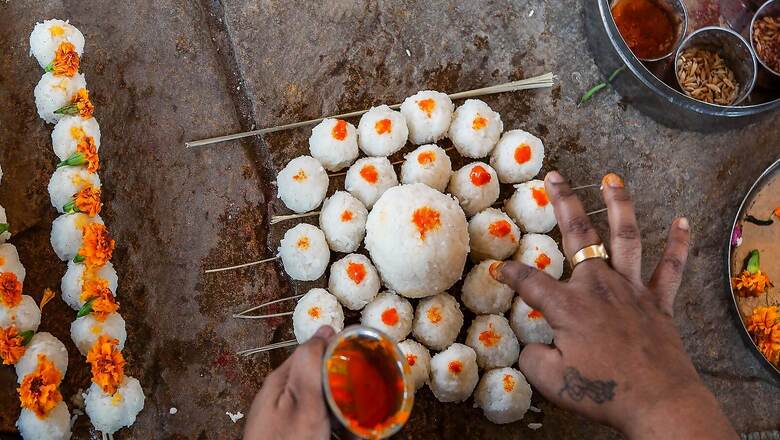
views
Pitru Paksha, the 15-day lunar period when Hindus pay homage to their ancestors would begin from September 20 onwards this year. According to the Hindu Panchang, it usually falls in the lunar month of Ashwin that begins on the full moon day of Bhadrapada or the next day of the full moon day. The Pitru Paksha will conclude on October 6 i.e. Sarvapitri Amavasya or Mahalaya Amavasya.
As per the Hindu beliefs, these 15-16 days mark the presence of ancestors on the earth who come down to bless their offsprings and their children. Hindus offer foods to dogs, cows and crows as part of the ritual. It is believed that the food given to these animals and birds is fed to deceased ancestors.
Read: Know the Mistakes You Should Avoid During Pitru Paksha
Know about Shraadh rites and rituals
The eldest member of the family, particularly the eldest son, begins the ritual by wearing clean clothes and a ring made of kush grass after a holy bath. Kush is a symbol of kindness and is used to invoke ancestors.
After that, a wooden table covered with a white cloth is kept in the south direction. Black sesame seeds and barley seeds are spread on the table and a picture of the ancestor is placed on it.
Devotees then invite their ancestors and offer ‘Pind’ in the form of rice balls which are usually made with ghee, honey, rice, goat’s milk, sugar and occasionally barley.
Pind is followed by ‘Tarpan’ where water mixed with flour, barley, kush and black sesame and offered. Once the Pind and Tarpan are done, the poor and needy people are offered food.
Pitrupaksha 2021: Significance
As per Hindu Puranas, it is believed that Hindus owe a karmic debt to their ancestors and they try to pay that by performing ‘Pind Daan’ during Shradh. It is said that Pind Daan performed by the succeeding generations on earth fulfil their ancestors’ unfulfilled desires and ensure their entry to heaven.
Read all the Latest News , Breaking News and Ukraine-Russia War Live Updates here.




















Comments
0 comment